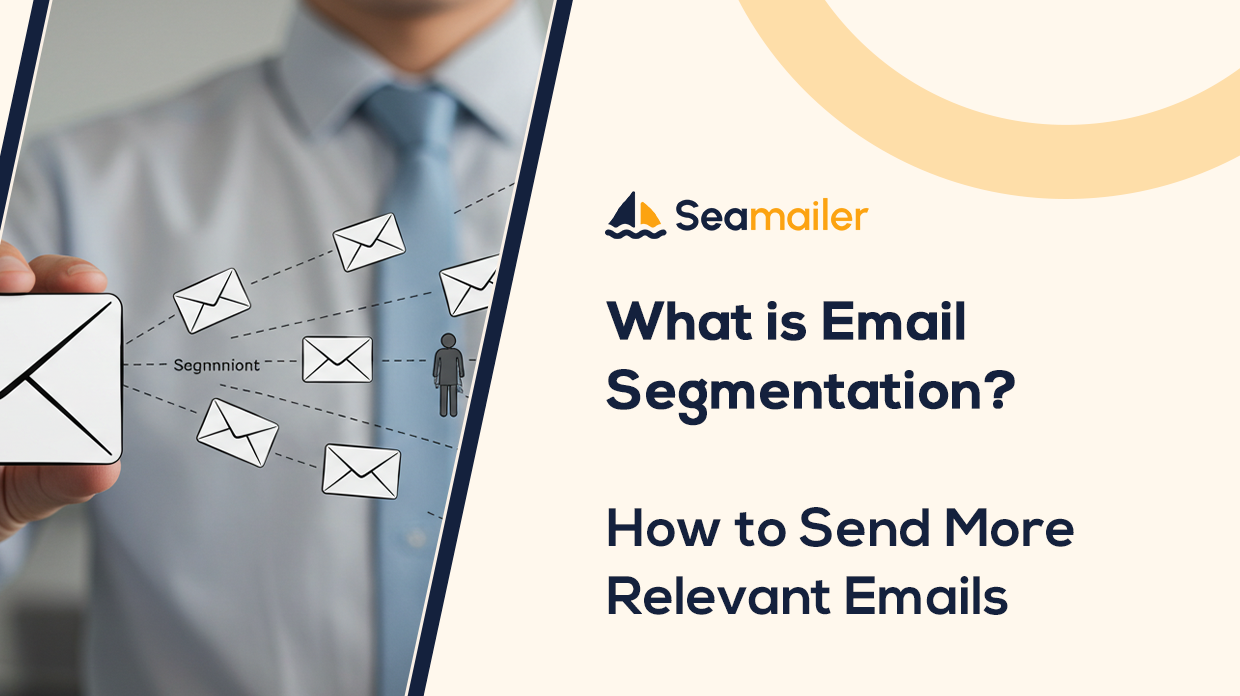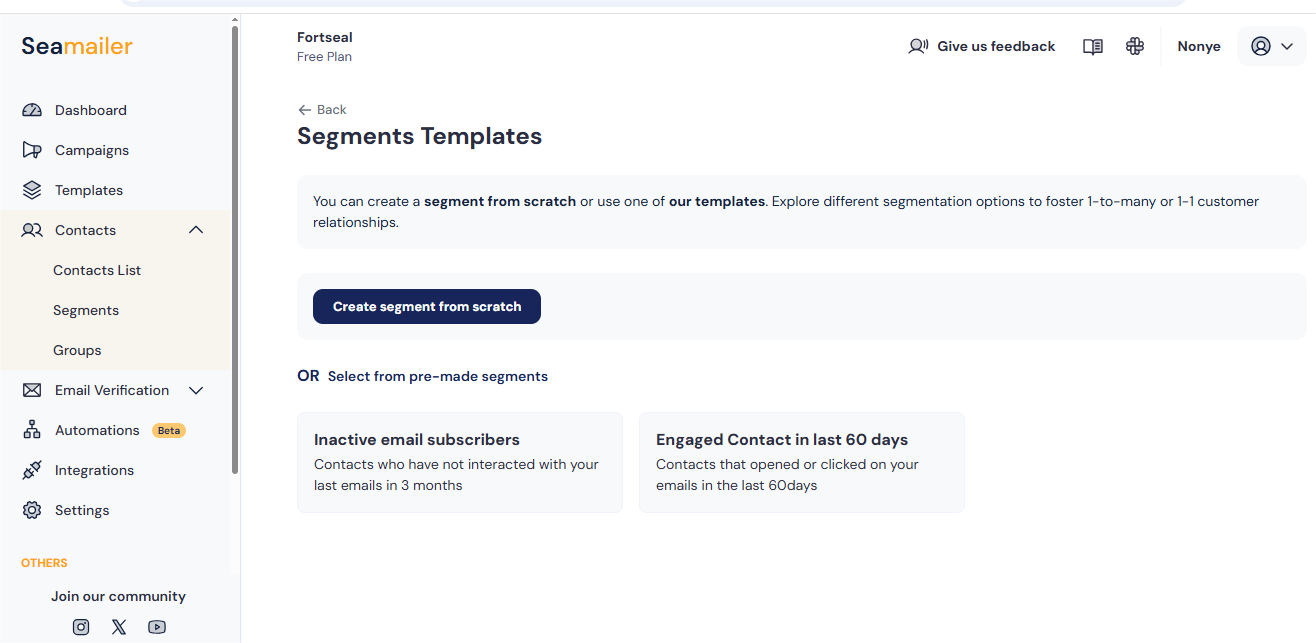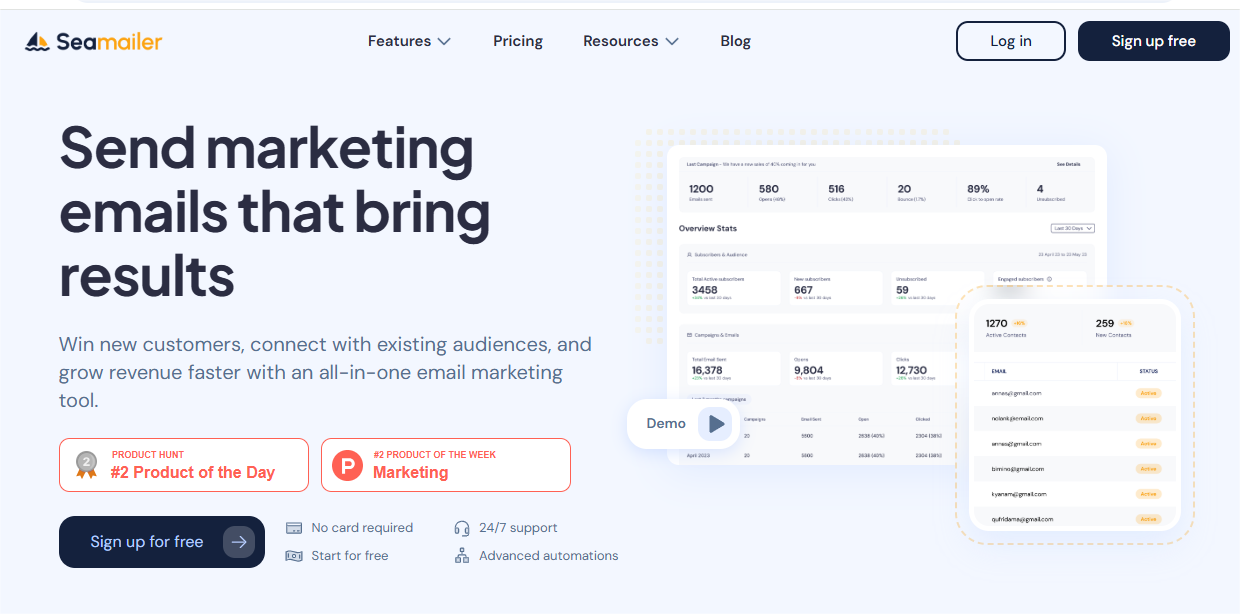What is Email Segmentation? How to Send More Relevant Emails

Email segmentation is the process of dividing your email list into smaller groups based on specific criteria, such as demographics, behavior, or preferences. This allows you to send more targeted and relevant emails to each group, increasing the likelihood of engagement and conversion.
Read more to discover:
- What is Email Segmentation?
- Why Email Segmentation Matters
- Types of Email Segmentation
- Benefits of Email Segmentation
- How to Segment Your Email List
- Segmentation Strategies That Work
- Examples of Email Segmentation in Action
- Common Mistakes to Avoid
- How Seamailer Helps You Segment Smarter
- Final Thoughts: Make Every Email Count
What is Email Segmentation?
This is the practice of dividing your email subscribers into smaller groups (segments) based on specific criteria. Instead of blasting the same email to your entire list, you create targeted messages tailored to different audience segments—making your emails more relevant and engaging.

Why Email Segmentation Matters
Generic emails are easy to ignore. Segmented emails feel personal. They show you know your audience and care about their preferences.
Here’s why segmentation is crucial:
Higher open and click rates: Personalized emails perform significantly better.
Lower unsubscribe rates: People are less likely to leave when content is relevant.
Increased conversions: Targeted messages drive better outcomes—whether it’s a sale, signup, or download.
Improved deliverability: Engaged recipients improve your sender reputation. According to Mailchimp, segmented campaigns see 14.31% higher open rates and 100.95% more clicks than non-segmented campaigns.
Types of Email Segmentation
Demographic Segmentation
Segment based on personal information such as: Age Gender Job title Industry Income level Example: A skincare brand can send anti-aging products to older subscribers and acne treatments to younger ones.
Behavioral Segmentation
Based on actions your subscribers take:
Past purchases
Product views
Cart abandonment
Content downloads
Example: Someone who bought shoes might receive follow-up emails for socks or care products.
Geographic Segmentation
Segment by location:
Country
Region
City
Time zone
Weather patterns
Example: A clothing brand promotes winter coats in Canada and swimsuits in Florida.
Psychographic Segmentation
Based on lifestyle, interests, values, or personality:
Eco-consciousness
Luxury shopper vs. budget-conscious
Fitness enthusiasts
Example: Promote sustainable packaging to eco-friendly shoppers.
Email Engagement Segmentation
Based on how subscribers interact with your emails: Active vs. inactive subscribers High click-through users Frequent openers Example: Win back cold subscribers with a re-engagement campaign.
Benefits of Email Segmentation
Personalized Experiences: Build deeper connections with your audience. Better Metrics: Enjoy better open rates, click-throughs, and ROI. Lower Costs: Spend less by sending emails only to the right people. Customer Loyalty: Relevant messages build trust and boost retention. More Sales: Targeted emails convert better, plain and simple. Increased ROI: By sending targeted emails to each segment, you can increase the return on investment (ROI) of your email marketing campaigns.
How to Segment Your Email List
Collect the Right Data Use sign-up forms, surveys, behavior tracking, and purchase history. Define Your Segments Choose segmentation criteria that align with your goals. Tag and Organize Your Subscribers Use email software like seamailer to tag users with attributes. Create Tailored Email ContentCustomize subject lines, product offers, and messaging for each segment.
Test and Optimize
Track your metrics and tweak your segments based on performance.

Segmentation Strategies That Work
First-Time Buyer Welcome Series
Abandoned Cart Recovery Campaigns
Location-Based Promotions
Birthday or Anniversary Offers
Loyal Customer VIP Access
Lead Magnet Follow-Ups Based on Interests
Examples of Email Segmentation in Action
Spotify
They send playlist recommendations based on your music taste.
Amazon
You get emails with product suggestions based on browsing history and past purchases.
Seamailer user
An e-commerce brand segments by purchase frequency sending high-value customers loyalty rewards and occasional buyers product reminders.

Common Mistakes to Avoid
Too Many Segments: Can get messy and hard to manage.
No Clear Goal: Don’t segment just for the sake of it.
Ignoring Data Hygiene: Keep your list clean and updated.
Same Email for All Segments: That defeats the purpose customize
How Seamailer Helps You Segment Smarter
Seamailer is designed with powerful segmentation features:
Tag subscribers automatically by behavior
Create dynamic segments based on real-time actions
Personalize campaigns at scale
Integrate with your e-commerce or CRM for deeper insights
Whether you’re sending 1,000 or 100,000 emails, seamailer makes it easy to segment like a pro.
Conclusion
Make Every Email Count. The inbox is a battlefield and the most relevant email wins. Email segmentation is more than a marketing tactic. It’s a way to connect with your audience on a human level. When you know who they are, what they want, and when they want it you’ll no longer be sending emails. You’ll be delivering value.
Ready to stop guessing and start segmenting?
Try seamailer today and send smarter emails that get results

